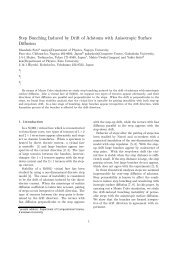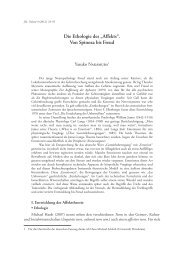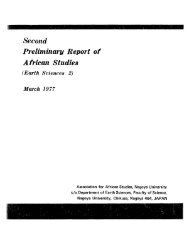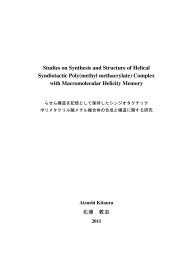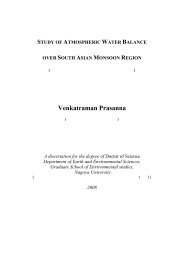k9254.pdf
k9254.pdf
k9254.pdf
You also want an ePaper? Increase the reach of your titles
YUMPU automatically turns print PDFs into web optimized ePapers that Google loves.
the tube was exposed to air to terminate the polymerization. The collected eluents were<br />
concentrated and precipitated into an excess of hexane. Monomer conversions were observed by<br />
1 H NMR based on integration areas. At resonance peak 4.0 ppm was considered as NIPA<br />
monomer and PNIPA, the integration factor was assented to 1 and the resonance peak 6.0-6.4<br />
ppm (vinyl portion of NIPA) as monomer. By GPC analysis number average molecular weight,<br />
Mn and molecular weight distribution, Mw/Mn, were obtained. Thickness of the grafted membrane<br />
were measured by a multimode, Nanoscope IIIa controller (Digital Instruments, Santa Barbara,<br />
CA) equipped with an atomic head of 100×100 μm 2 scan range. Measurements were done in the<br />
air by contact mode using a commercially manufactured V-shaped silicon nitride (Si3N4)<br />
cantilever with gold on the back for laser beam reflection (Nanopics 2100, NPX2100). Air<br />
bubble contact angle measurements were made with a Data Physics telescopic goniometer with a<br />
Hamilton syringe with a flat-tipped needle. Water was used as the probe liquid.<br />
2.3. RESULT AND DISCUSSION.<br />
ATRP of NIPA on the silicon surface was accomplished in presence of a free initiator,<br />
CuCl/Me6TREN system, and DMSO as a solvent, because the polymerization without the free<br />
initiator will give free polymers with Mn values independent of monomer conversion and high<br />
molecular weight distribution (Mw/Mn > 3). During the polymerization without a free initiator,<br />
the concentration of the Cu II complex produced from the reaction at the substrate surface is too<br />
low to reversibly deactivate P . , which is the propagating radical produced by the halogen atom<br />
(X) transfer from P-X to Cu I complex, with a sufficiently high rate. Thus, during polymerization<br />
reaction a minimum amount of deactivator is required to control the surface initiator of ATRP.<br />
On the other hand, the additional initiator would increase and adjust the concentration of Cu II<br />
complex as in a free ATRP system. Alternatively, the adjustment of the Cu II concentration could<br />
be made by directly adding an appropriate amount of Cu II complex. Another advantage of the<br />
addition of the free initiator is that it produces free polymers, which can be used for the<br />
measurement of molecular weight and molecular weight distribution of the graft chains, because<br />
the graft chains have nearly the same molecular weight and molecular weight distribution as the<br />
34



